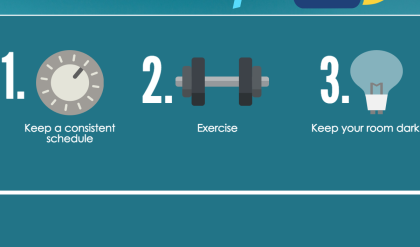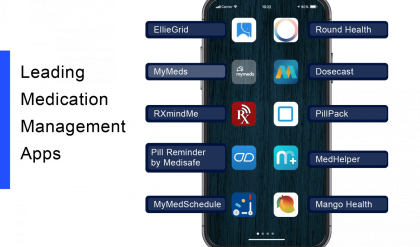
Declutter Your Medicine Cabinet: A Step-by-Step Guide to a Healthier, Happier You
The medicine cabinet. A small space, often overlooked, yet a potent symbol of our health and well-being. But let’s be honest, how often does that well-being translate to organized, efficiently stored medications and supplies? Probably not often enough. A cluttered medicine cabinet isn’t just visually unappealing; it’s a potential hazard, leading to expired medications, confusion, and even accidental ingestion. This comprehensive guide will help you conquer the chaos and transform your medicine cabinet into a sanctuary of health and order.
Phase 1: The Great Purge – Assessing Your Arsenal
Before you even think about organizing, you need to declutter. This isn’t just about tossing out the obvious; it’s about a thoughtful evaluation of every item within those mirrored doors.
Step 1: The Inventory
Empty your medicine cabinet completely. Lay everything out on a clean surface. This allows you to see the full extent of what you’re dealing with – a surprisingly effective motivator in itself!
Step 2: The Expiration Date Expedition
This is where the real work begins. Check every single item for expiration dates. Be ruthless. Expired medications are not only ineffective but potentially harmful. Dispose of them properly according to local regulations – many pharmacies offer take-back programs.
Step 3: The Duplicate Dilemma
Are you hoarding duplicates? We’ve all been there, buying a new bottle of pain relievers when we already have half a bottle at home. Consolidate duplicates, keeping only what you need for the immediate future.
Step 4: The Questionable Crew
This is for those mystery bottles and tubes whose contents are unknown. If you can’t identify it, toss it. If you’re uncertain about its purpose or expiration, err on the side of caution and discard it.
Phase 2: Strategic Organization – Building Your System
Now that you’ve decluttered, it’s time to strategically organize what remains. This isn’t just about neatness; it’s about accessibility and safety.
Step 1: Categorization is Key
Group similar items together. This might include pain relievers, cold medications, first-aid supplies, vitamins, and personal care items. Consider using small containers or baskets to further organize within categories.
Step 2: Prioritize and Position
Place frequently used items at eye level and within easy reach. Less frequently used items can be stored higher or lower.
Step 3: The First-Aid Focus
Keep your first-aid supplies easily accessible and organized. Consider a small, clear container for bandages, antiseptic wipes, and other essentials.
Step 4: Childproofing
If you have young children, secure your medicine cabinet with a childproof lock. This is a crucial safety measure.
Phase 3: Maintaining the Magic – Long-Term Strategies
The hardest part is over! Now, let’s talk about keeping your medicine cabinet clutter-free for the long haul.
Step 1: The “One In, One Out” Rule
When you buy a new medication or item, discard an old, similar one. This prevents future accumulation.
Step 2: Regular Reviews
Schedule regular checks (quarterly is a good start) to ensure expiration dates are up-to-date and that you haven’t accumulated unnecessary items.
Table: Medicine Cabinet Essentials
| Category | Items | Notes |
|---|---|---|
| Pain Relief | Acetaminophen, Ibuprofen, Aspirin | Check expiration dates regularly |
| Cold & Flu | Decongestants, Cough suppressants | Follow dosage instructions carefully |
| First Aid | Bandages, Antiseptic wipes, Tweezers | Replace as needed |
| Vitamins & Supplements | Multivitamins, Specific Supplements | Check expiration dates and dosage |
| Personal Care | Toothpaste, Toothbrush, Floss | Replace regularly |
By following these steps, you can transform your medicine cabinet from a chaotic mess into a well-organized, safe, and efficient space. Remember, a clutter-free medicine cabinet is not just aesthetically pleasing; it’s a reflection of your commitment to your health and well-being.
:strip_icc()/medicine-cabinet-organization-0a9b8d96-1d33ce78253e4ec68396bc17f49973a3.jpg)
Additional Information
Decluttering Your Medicine Cabinet: A Deeper Dive into Safety, Efficacy, and Waste Reduction
A simple guide to decluttering a medicine cabinet often overlooks the significant implications beyond just tidiness. A thorough process necessitates a deeper understanding of medication safety, efficacy, and environmental impact. This analysis expands on a basic decluttering guide, providing a more comprehensive and analytical approach.
I. Beyond Expiry Dates: Assessing Medication Safety and Efficacy:
Simply discarding medications past their expiry dates, while a common practice, is insufficient. The degradation of medications varies significantly depending on the type of drug, storage conditions, and formulation. Some medications remain potent well beyond their expiry date, while others may degrade rapidly and become ineffective or even dangerous.
-
Temperature Sensitivity: Many medications, particularly liquids and suspensions, are sensitive to temperature fluctuations. Exposure to extreme heat or cold can accelerate degradation, compromising their efficacy. This highlights the importance of proper storage according to the manufacturer’s instructions, which should be reviewed during the decluttering process.
-
Light Sensitivity: Exposure to light, especially ultraviolet light, can also degrade some medications. Storing medications in opaque containers or in dark, cool areas is crucial for maintaining potency.
-
Chemical Degradation: Certain medications may degrade even under ideal storage conditions, leading to the formation of harmful byproducts. This is particularly relevant for older medications.
-
Case Study Example: A study published in the Journal of Pharmacy Practice found that many commonly prescribed medications retained significant potency even years after their expiry dates when stored properly. However, this varied dramatically based on the specific medication. This emphasizes the need for a case-by-case assessment rather than blanket discarding based solely on expiry dates.
II. Evaluating Medication Relevance and Duplication:
The decluttering process should extend beyond mere expiration dates to encompass a review of medication relevance and potential duplication.
-
Redundancy Check: Many individuals accumulate medications for similar conditions, often leading to unintentional overdoses or interactions if multiple medications are taken concurrently. A thorough review of all medications, including over-the-counter drugs, is essential to identify redundancies.
-
Outdated Prescriptions: Discarding outdated prescriptions is crucial not just for organization, but also for security. Old prescriptions could potentially be misused or fall into the wrong hands.
-
Medication Reconciliation: Ideally, this decluttering exercise should be conducted in conjunction with a review of current medications with a pharmacist or physician. This reconciliation process minimizes the risk of medication errors and interactions.
III. Environmentally Conscious Disposal:
Improper disposal of medications poses significant environmental and health risks. Flushing medications down the toilet or throwing them in the trash can contaminate water supplies and landfills.
-
Take-Back Programs: Many pharmacies and healthcare providers participate in medication take-back programs, offering safe and environmentally sound disposal options. This information should be readily available during the decluttering process.
-
Household Hazardous Waste Programs: These programs provide a designated disposal route for medications and other household hazardous waste, preventing environmental contamination.
-
Statistics: The Environmental Protection Agency (EPA) highlights the significant impact of improper medication disposal on water quality and wildlife. Statistics on medication found in water sources, along with the health consequences, should inform the decluttering process and emphasize responsible disposal methods.
IV. Proactive Medication Management:
Decluttering the medicine cabinet is not a one-time event. Establishing proactive strategies for medication management is crucial to prevent future accumulation and maintain a safe and organized system.
-
Regular Reviews: Schedule regular reviews of the medicine cabinet (e.g., every six months) to check expiry dates, assess medication relevance, and identify potential redundancies.
-
Digital Inventory: Maintaining a digital inventory of medications, including expiry dates and dosages, can facilitate a more efficient decluttering process and prevent future overstocking.
In conclusion, decluttering a medicine cabinet transcends simple organization. It necessitates a critical assessment of medication safety, efficacy, and environmental responsibility. By incorporating the elements discussed above, individuals can transform this task into a proactive measure to enhance health, safety, and environmental sustainability.






